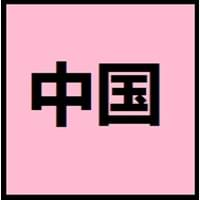Chinese vs Ilocano
Countries
China, Hong Kong, Macau, Singapore, Taiwan
Philippines
National Language
China, Taiwan
Philippines
Second Language
Republic of Brazil
Not spoken in any of the countries
Speaking Continents
Asia
Asia
Minority Language
Indonesia, Malaysia
Not spoken in any of the countries
Regulated By
Chinese Language Standardization Council, National Commission on Language and Script Work, Promote Mandarin Council
Commission on the Filipino Language
Interesting Facts
- Chinese language is tonal, since meaning of a word changes according to its tone.
- In Chinese language, there is no grammatical distinction between singular or plural, no declination of verbs according to tense, mood and aspect.
- Ilocano was originally written with Baybayin syllabary, then gradually it was replaced by Latin alphabet.
- Northwest Luzon is the original Ilocano homeland.
Similar To
Not Available
Tagalog, Indonesian and Malaysian Languages
Derived From
Not Available
Not Available
Alphabets in
Chinese.jpg#200
Ilocano-Alphabets.jpg#200
Scripts
Chinese Characters and derivatives
Ilokano Braille, Latin
Writing Direction
Left-To-Right, Horizontal, Top-To-Bottom
Not Available
Time Taken to Learn
Not Available
Hello
您好 (Nín hǎo)
Kablaaw
Thank You
谢谢 (Xièxiè)
Agyamanak
How Are You?
你好吗? (Nǐ hǎo ma?)
Kumusta?
Good Night
晚安 (Wǎn'ān)
Naimbag a rabii
Good Evening
晚上好 (Wǎnshàng hǎo)
Naimbag a sardam
Good Afternoon
下午好 (Xiàwǔ hǎo)
Naimbag a malem
Good Morning
早安 (Zǎo ān)
Naimbag a bigat
Please
请 (Qǐng)
Not available
Sorry
遗憾 (Yíhàn)
Agpakawanak
I Love You
我爱你 (Wǒ ài nǐ)
Ayayatenka
Excuse Me
劳驾 (Láojià)
Maawan-dayawen
Dialect 1
Mandarin
Balangao
Where They Speak
China, Malaysia, Singapore, Taiwan
Philippines
Where They Speak
China, United States of America
Philippines
Dialect 3
Yue
Not present
Where They Speak
China, Malaysia, Singapore, Vietnam
Not present
How Many People Speak
Not Available
Second Language Speakers
Not Available
Native Name
中文 (zhōngwén)
ilokano
Alternative Names
Not Available
Ilokano, Iloko
French Name
chinois
ilocano
German Name
Chinesisch
Ilokano-Sprache
Pronunciation
Not Available
Not Available
Ethnicity
Han
Ilocano people
Origin
1250 BC
18th Century
Language Family
Sino-Tibetan Family
Austronesian Family
Subgroup
Not Available
Not Available
Branch
Not Available
Not Available
Early Forms
No early forms
No early forms
Standard Forms
Standard Chinese
Modern Ilocano
Signed Forms
Wenfa Shouyu 文法手語 ("Grammatical Sign Language", Signed Mandarin (Taiwan))
Not Available
Scope
Individual
Individual
ISO 639 1
zh
No data available
ISO 639 6
Not Available
Not Available
Glottocode
sini1245
ilok1237
Linguasphere
79-AAA
31-CBA-a
Language Type
Living
Living
Language Linguistic Typology
Subject-Verb-Object
Not Available
Language Morphological Typology
Analytic, Isolating
Not Available
Chinese and Ilocano Language History
Comparison of Chinese vs Ilocano language history gives us differences between origin of Chinese and Ilocano language. History of Chinese language states that this language originated in 1250 BC whereas history of Ilocano language states that this language originated in 18th Century. Family of the language also forms a part of history of that language. More on language families of these languages can be found out on Chinese and Ilocano Language History.
Chinese and Ilocano Greetings
People around the world use different languages to interact with each other. Even if we cannot communicate fluently in any language, it will always be beneficial to know about some of the common greetings or phrases from that language. This is where Chinese and Ilocano greetings helps you to understand basic phrases in Chinese and Ilocano language. Chinese word for "Hello" is 您好 (Nín hǎo) or Ilocano word for "Thank You" is Agyamanak. Find more of such common Chinese Greetings and Ilocano Greetings. These greetings will help you to be more confident when conversing with natives that speak these languages.
Chinese vs Ilocano Difficulty
The Chinese vs Ilocano difficulty level basically depends on the number of Chinese Alphabets and Ilocano Alphabets. Also the number of vowels and consonants in the language plays an important role in deciding the difficulty level of that language. The important points to be considered when we compare Chinese and Ilocano are the origin, speaking countries, language family, different greetings, speaking population of these languages. Want to know in Chinese and Ilocano, which language is harder to learn? Time required to learn Chinese is 88 weeks while to learn Ilocano time required is Not Available.





